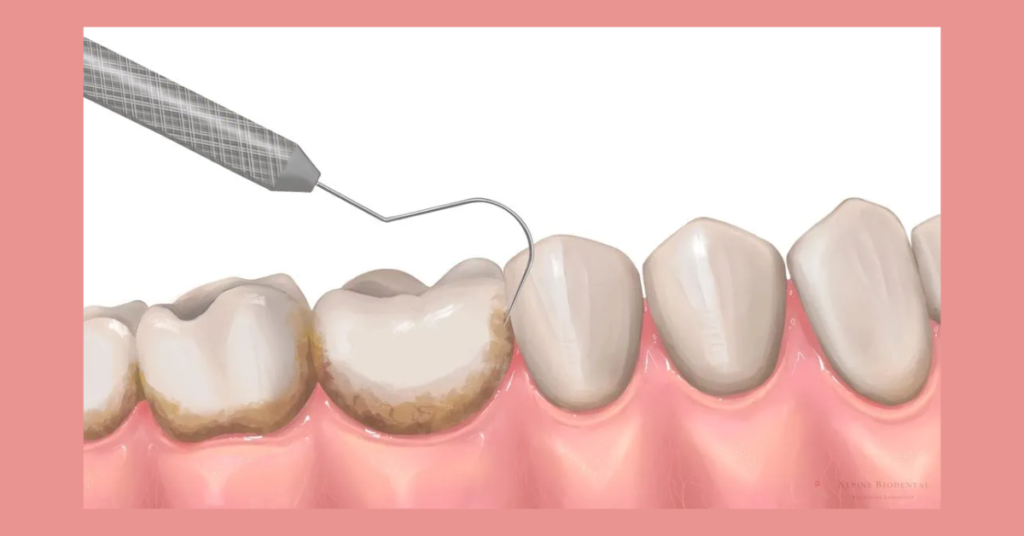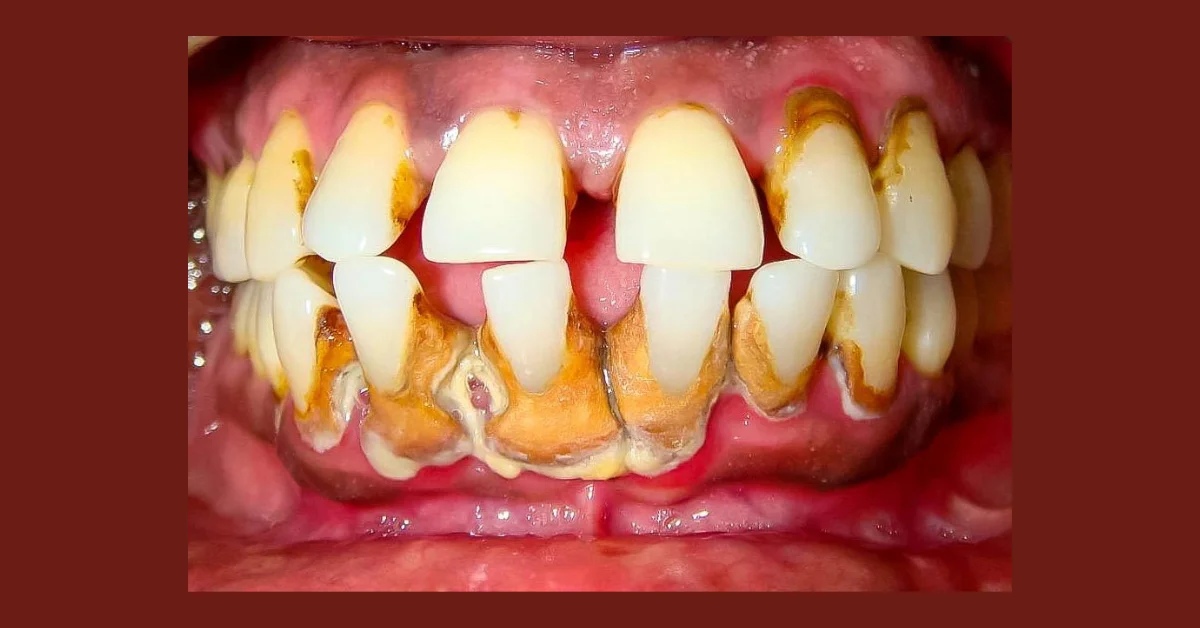Calculus Bridge: From Formation to Prevention – Everything You Need to Know
Calculus Bridge is a frequent dental problem that can cause discomfort and suffering to people. It happens when plaque and germs accumulate on the teeth, forming a bridge-like structure between two teeth. It can result in a range of side effects, including tooth decay, gum disease, and tooth loss. In this post, we will look at the causes of the calculus bridge, the potential side effects, and how to prevent and manage this condition for good dental health. Understanding the basics of calculus bridge can help individuals take proactive measures to protect their teeth and maintain a healthy smile.
What is a Calculus Bridge?
A dental calculus, also called tartar, is a yellowish or whitish deposit of minerals on the surface of teeth. Calculus is commonly seen in areas where the salivary duct opens into the oral cavity.When a calculus bridge occurs, the tartar forms across multiple teeth. Calculus bridges form when plaque becomes calcifies, or hardens over time. Calculus bridges are composed of both organic and inorganic compounds. When tartar buildup spreads below the gum line, it makes the teeth harder to clean.
What Does a Calculus Bridge Look Like?
Unlike plaque, a calculus buildup is visible and can vary in color depending on where it’s located relative to the gumline. Calculus is a denser, claylike substance, typically yellow above the gumline and dark brown, green, or black below the gumline. A calculus bridge forms when calculus coats multiple teeth in a row and starts to fill in the gaps between them. Individual cases vary but a calculus bridge tends to start as a dark discoloration on the teeth along the gumline before spreading.
What are the complications of calculus bridge disease?
Complications can occur if a calculus bridge is not treated. These are the most common complications.
Halitosis
Halitosis, commonly referred to as bad breath, can occur with the buildup of tartar in the mouth. Bacteria from hardened plaque causes an unpleasant odor to the breath. Brushing your teeth daily and getting professional dental cleanings can help prevent halitosis. Left untreated, halitosis can be chronic and persist despite frequent brushing or using mints or gum.
Cavities
A dental cavity is a hole in a tooth that results when plaque and tartar destroy the tooth enamel, which is the hard outer layer of the tooth. Calculus bridges can extend into the gum line, exposing the tooth roots to tartar and plaque.
Receding gums
Dental calculus can often build up along the gum line, causing gum disease. With gum disease, gums can recede, exposing the root of the tooth. This makes the tooth more vulnerable to additional tartar and plaque.
Tooth loss
In severe cases, calculus bridges can lead to tooth loss. This occurs when tartar buildup causes severe dental cavities, receding gums, or bone loss.
Read Previous: 23.50.52.33 etreasury6.pat.tdbank.com
Learn Why Calculus Bridge Occurs
The primary cause of calculus bridge formation is the accumulation of dental plaque, a sticky film composed of bacteria, leftover food particles, and saliva due to poor dental hygiene practices. Plaque forms very easily on your teeth and, if not removed through proper dental hygiene practices, it can harden into tartar—also known as calculus. This calcified dental plaque adheres firmly to tooth surfaces and requires professional intervention for removal. Factors contributing to plaque and calculus bridge include:
- Poor Oral Hygiene: Inadequate brushing and flossing allow plaque to accumulate and harden.
- Diet: Consuming sugary and starchy foods promotes plaque formation.
Risks & Effects Of a Calculus Bridge
Untreated calculus bridges pose significant risks to oral health. The hardened calculus bridge can spread and progress down into the gums, causing various oral health problems such as:
- Gum Disease: Tartar buildup irritates gum tissue, leading to gum infections, inflammation and gingivitis, which can progress to a periodontal disease (such as periodontitis) if untreated.
- Tooth Decay: The bacteria in calculus produce acids that erode tooth enamel, leading to cavities.
- Receding Gums: Advanced gum disease can cause gums to recede, exposing the roots of teeth and increasing sensitivity.
- Tooth Loss: Untreated calculus bridge can lead to severe gum disease, resulting in tooth loss.
- Bad Breath: Bacterial activity associated with calculus bridge can cause chronic bad breath (halitosis).
Preventing the Formation of a Calculus Bridge
While professional treatment is necessary for removing a calculus bridge, taking steps to prevent its formation in the first place is crucial for maintaining a healthy smile. Consistent oral hygiene practices and regular dental visits are the best defenses against calculus buildup.
Calculus Bridge Various Treatments for its Removal

Dentists or hygienists utilize special devices and methods to grind calculus from the tooth and stop further build-up. There are many standard treatments. Part of periodic dental cleaning is dental scaling, in which the dentist utilizes technical tools to scrape off the deposits from the domes of teeth. Heeding the disposal of the calculus will wash and smooth the surfaces of the teeth to control bacterial formation.
FAQs
What causes a calculus bridge?
A calculus bridge forms due to poor oral hygiene. Plaque, a sticky film of bacteria, accumulates on the teeth and, if not removed, hardens into tartar (calculus). Tartar can build up across multiple teeth, creating a visible bridge.
How can I tell if I have a calculus bridge?
Calculus bridges appear as dense, claylike deposits that may look yellow, dark brown, green, or black, depending on their position relative to the gumline. They start as dark discolorations along the gumline and can spread between teeth.
What are the risks if a calculus bridge is left untreated?
Untreated calculus bridges can lead to gum disease, cavities, receding gums, tooth loss, and chronic bad breath. It’s essential to remove calculus bridges to prevent these serious dental issues.
Can I remove a calculus bridge at home?
No, calculus is firmly attached to the teeth and requires professional removal. Dentists use special tools, such as scalers, to remove it effectively and safely without damaging the teeth.
Conclusion
Calculus bridge is a serious dental issue that can impact oral health significantly if left untreated. It develops from hardened plaque that forms between teeth and along the gumline, leading to complications like gum disease, tooth decay, bad breath, and even tooth loss. While professional intervention is required for calculus removal, maintaining consistent oral hygiene practices—such as regular brushing, flossing, and dental cleanings—can help prevent its formation. By understanding the causes and risks of a calculus bridge, individuals can take proactive steps to protect their teeth, promote gum health, and maintain a confident, healthy smile.
Read Next: 4 Oct 1929 Jacob Crause Obituary Belleville Democrat





